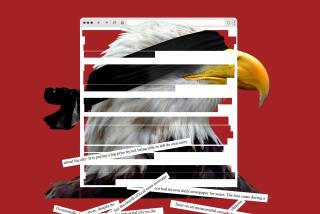Leaner, Meaner TV News in the Scaled-Down ‘90s
- Share via
In 1982, at the height of the last recession, reporter Doug Bruckner flew to Guadalajara for a local Los Angeles TV station. The assignment was to interview California retirees who had moved to Mexico to avoid the high cost of living in the United States.
On that three-day trip, Bruckner was accompanied by a union cameraman, soundman, field producer and translator--even though the field producer spoke Spanish. What with overtime, per diem, hotel bills, meals, transportation and air fare, Bruckner figures the total bill for a bit of videotape that eventually translated into about four minutes of air time on a Los Angeles evening newscast was somewhere in the neighborhood of $15,000 to $20,000.
Bruckner has since worked at all three network owned-and-operated Los Angeles TV stations at one time or another. Nowadays, he works harder for a non-network evening newsmagazine and on more of a shoestring than at any other time in his career. But, on whole, he has learned to be leaner, meaner and--recession aside--happier.
Six months ago, on a Friday afternoon, the syndicated Paramount TV newsmagazine “Hard Copy” bought Bruckner a round-trip ticket to Tahiti. The assignment was to cover the funeral of Dag Drollet, Cheyenne Brando’s lover who allegedly was slain by her half-brother, Christian, in the Beverly Hills home of their father, actor Marlon Brando.
Bruckner’s boss gave him 10 blank videocassettes and $35 a day per diem pay and told him to come back Monday with a story. He did and, according to the ratings, it was seen by more people in a single night than saw him on Los Angeles TV in a week.
Surviving TV news in the scaled-down ‘90s will have to be more like the Tahiti story and a lot less like the Guadalajara junket, says Bruckner.
“The economics of the business have changed,” he said.
More to Read
The biggest entertainment stories
Get our big stories about Hollywood, film, television, music, arts, culture and more right in your inbox as soon as they publish.
You may occasionally receive promotional content from the Los Angeles Times.










